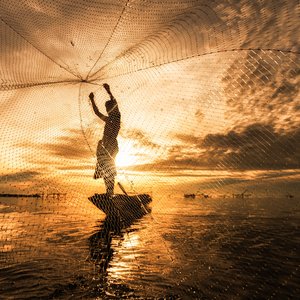Every year, the Norwegian Institute of Marine Research analyzes every year Norwegian fish feed and feed ingredients on behalf of the Norwegian Food Safety Authority. In 2021, a total of 151 samples of fish feed and feed were examined. The samples were examined for a number of undesirable substances, banned substances, bacteria, additives and nutrients.
“We did not find any unwanted substances above-established limit values, and this is quite similar to previous years. But we see from this year's analysis cases where both feed materials and complete feed contain elevated levels of some undesirable substances,” said Veronika Sele, researcher at the Institute of Marine Research.
Compounds without established limit values
There were two groups of substances in particular that were registered with higher levels than what is usually measured in feed monitoring, brominated flame retardants and perfluorinated compounds (PFAS). “For these substances, no upper limit values have been established for feed or feed ingredients. But we see cases where some samples have elevated levels of these substances than we have seen earlier in this monitoring,” said Sele.
The brominated and fluorinated compounds have been used as flame retardants, for example, in fire foam, textiles and electronic products. Today, some of these substances are banned from use, but since they are stable and degrade slowly, they are still found in the environment and can end up in drinking water, food and raw materials.
For the perfluorinated compounds, there are discussions about establishing limit values in food for some of these substances. This is a large group of compounds, and it is thus important to strengthen the database on these in feed and feed materials.
Overall good quality of the samples
The samples analyzed in 2021 consisted of 82 fish feed, 10 fishmeal, 19 vegetable meals, 4 insect meals, 10 fish oils, 10 vegetable oils and 16 premixes. The general condition of the analyzed samples was good. In one of the samples of fishmeal, levels of Enterobacteriacea were found above the limit value. This may indicate poor hygiene for this sample.
Approximately two million tonnes of fish feed are produced annually in Norway and researchers suggested that the sample size in the feed monitoring should be assessed.
“The use of new raw materials in fish feed can introduce unknown risk factors in the feed area. Therefore, in the future, different types of feed should be investigated, both for different stages of life and for different fish species,” said Sele. “The results indicate that monitoring should be strengthened to better map changes and the variation of the substances in feed and complete feed.”
Check out the report here (Norwegian).










